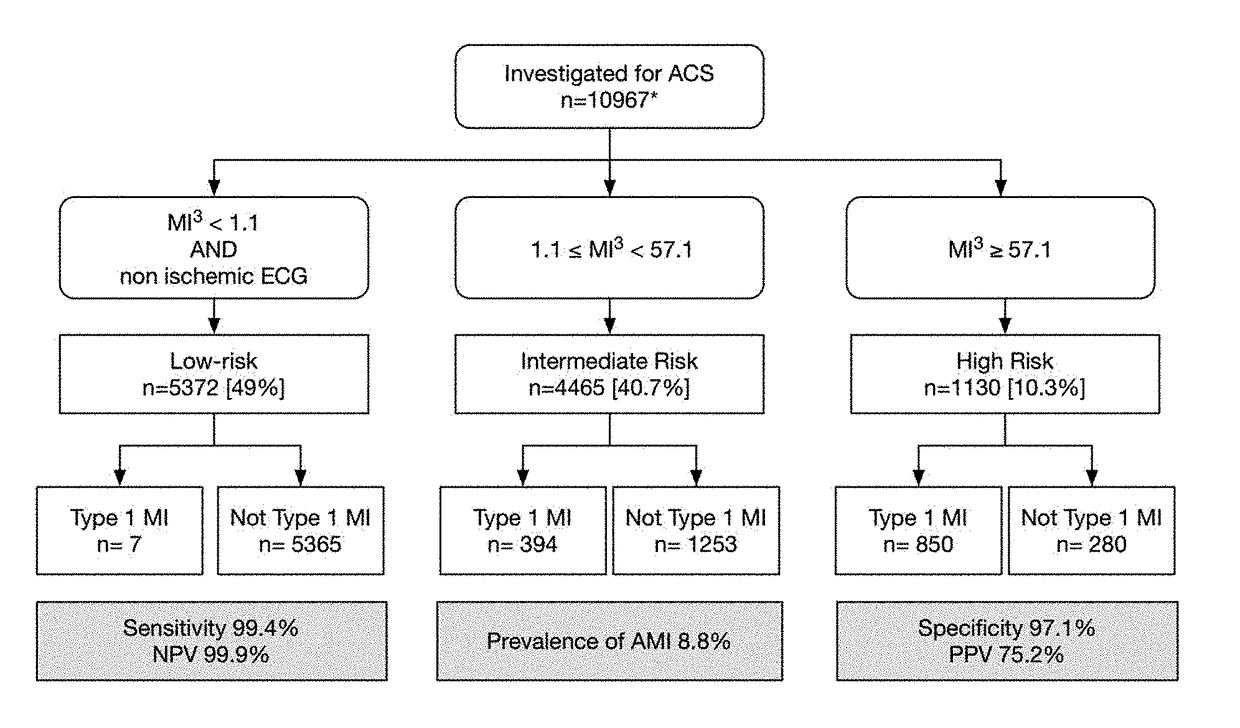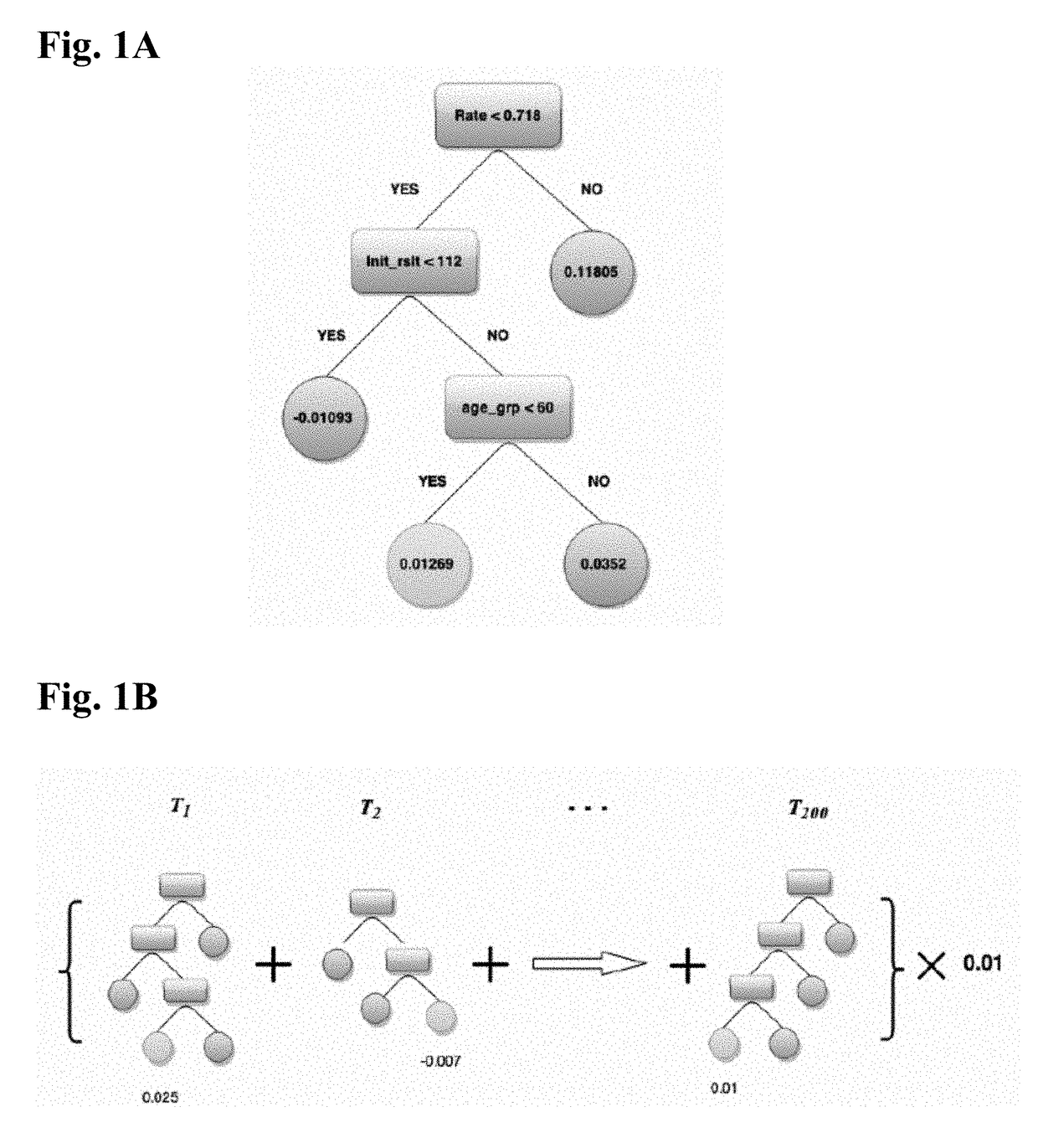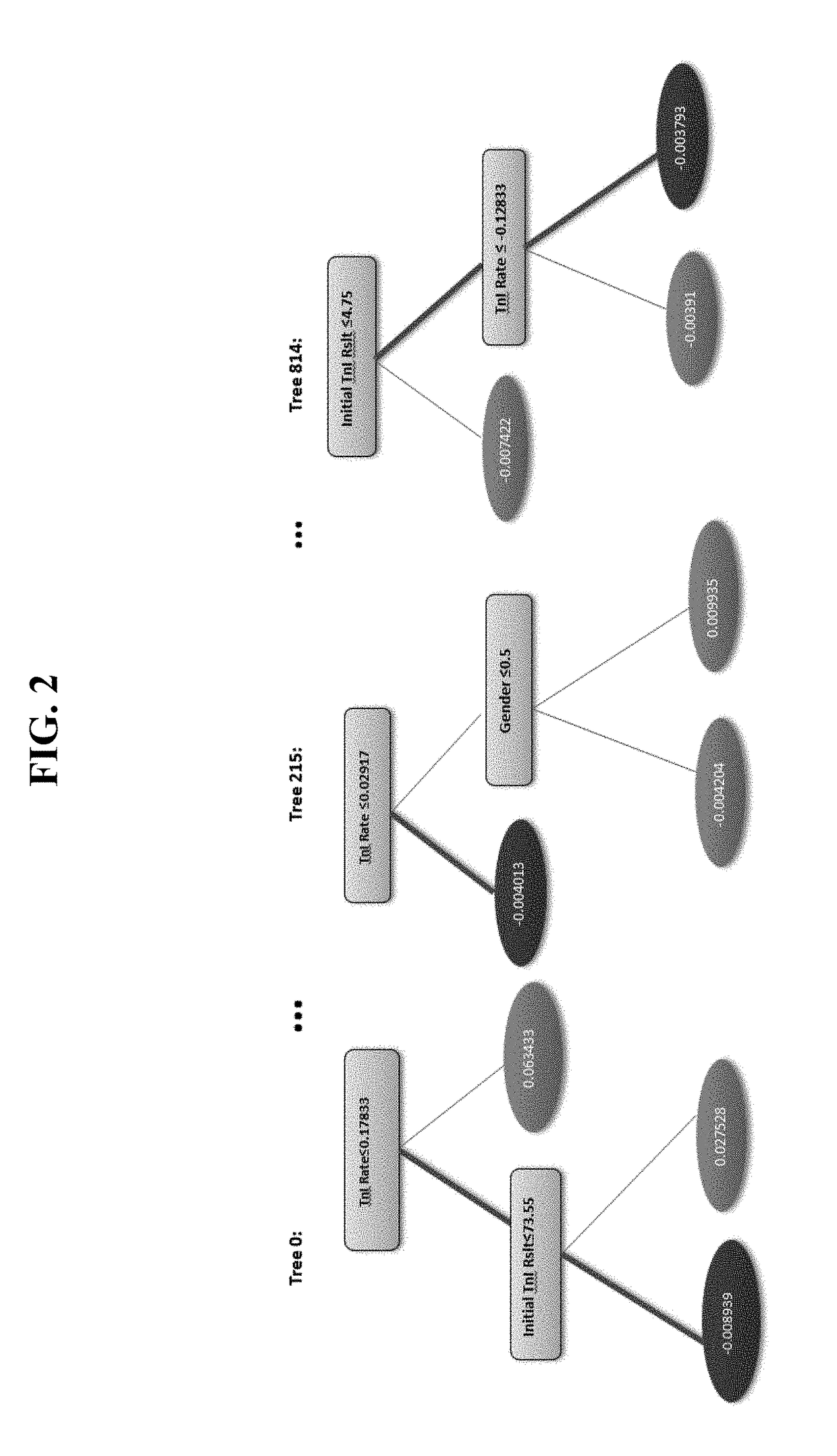Decision tree based systems and methods for estimating the risk of acute coronary syndrome
a decision tree and risk technology, applied in the field of decision tree based systems and methods for estimating the risk of acute coronary syndrome, can solve the problems of false negatives and false positives regarding the risk of acs, more severe outcomes or increased mortality, and increased healthcare costs
- Summary
- Abstract
- Description
- Claims
- Application Information
AI Technical Summary
Benefits of technology
Problems solved by technology
Method used
Image
Examples
example 1
Testing a Patient Population
[0058]This example describes the testing of a population of 972 subjects, where 86 had myocardial infarction (MI) and 886 were non-MI patients. This testing allowed the development of the 815 tree database (M=815) that is shown in Appendix A, as well as the Index Reference table shown in Table 1 below.
TABLE 1INDEX REFERENCE TABLESensitivity (%)Specificity (%)PPV (%)NPV (%) IndexRisk Level[95% CI][95% CI][95% CI][95% CI] 0.00Low risk100.00 [98.62, 100.00] 0.00 [0.00, 0.22] 13.62 [12.12, 15.22]NA 1.00Low risk100.00 [98.62, 100.00] 13.80 [12.19, 15.54] 15.46 [13.78, 17.26]100.00 [98.42, 100.00] 2.00Low risk 98.87 [96.73, 99.77] 60.56 [58.18, 62.91] 28.32 [25.44, 31.35] 99.71 [99.14, 99.94] 3.00Low risk 98.11 [95.65, 99.38] 70.61 [68.37, 72.78] 34.48 [31.09, 38.00] 99.58 [99.02, 99.86[ 4.00Mod. risk 96.23 [93.17, 98.18] 78.35 [76.30, 80.29] 41.20 [37.29, 45.19] 99.25 [98.62, 99.64] 5.00Mod. risk 95.09 [91.76, 97.36] 82.51 [80.61, 84.30] 46.15 [41.91, 50.44] 9...
example 2
Determining ACS Risk in a Patient
[0059]This example describes an exemplary method for determining ACS risk in a patient. A patient presents to an emergency room with chest pain. The relevant patient information is collected from the patient by questioning the patient and testing an initial and second blood sample from the patient to determine cardiac troponin I concentration. The patient information is presented in Table 2 below.
TABLE 2InitialInitialSecondTnITnI RsltSecondResultAgeRsltTimeResultTimeRateGenderAgedeciles15.314:5013.815:50−0.0250 (Female)867
[0060]The TnI Rate (per minute) is calculated by using the difference between the two hs TnI concentration values divided by the corresponding difference between collection time (in minutes) from the first two available time points of the subject. Next, age is categorized into deciles (1-7) as follows: ‘<30’ (1), ‘30-<40’ (2), ‘40-<50’ (3), ‘50-<60’ (3), ‘60-<70’ (4), ‘70-<80’ (6), ‘80 or older’ (7). This patient was 86, so they wer...
example 3
Determining ACS Risk in a Patient
[0068]This example describes an exemplary method for determining ACS risk in a patient. A patient presents to an emergency room with chest pain. The relevant patient information is collected from the patient by questioning the patient and testing an initial and second blood sample from the patient to determine cardiac troponin I concentration. The patient information is presented in Table 5 below.
TABLE 5InitialSecondInitial TnITnI RsltSecondResultAgeRsltTimeResultTimeRateGenderdeciles15.314:5013.815:50−0.0250 (Female)7 (86)
[0069]The TnI Rate (per minute) is calculated by using the difference between the two hs TnI concentration values divided by the corresponding difference between collection time (in minutes) from the first two available time points of the subject. Next, age is categorized into deciles (1-7) as follows: ‘<30’ (1), ‘30-<40’ (2), ‘40-<50’ (3), ‘50-<60’(3), ‘60-<70’ (4), ‘70-<80’ (6), ‘80 or older’ (7). This patient was 86, so they wer...
PUM
 Login to view more
Login to view more Abstract
Description
Claims
Application Information
 Login to view more
Login to view more - R&D Engineer
- R&D Manager
- IP Professional
- Industry Leading Data Capabilities
- Powerful AI technology
- Patent DNA Extraction
Browse by: Latest US Patents, China's latest patents, Technical Efficacy Thesaurus, Application Domain, Technology Topic.
© 2024 PatSnap. All rights reserved.Legal|Privacy policy|Modern Slavery Act Transparency Statement|Sitemap



